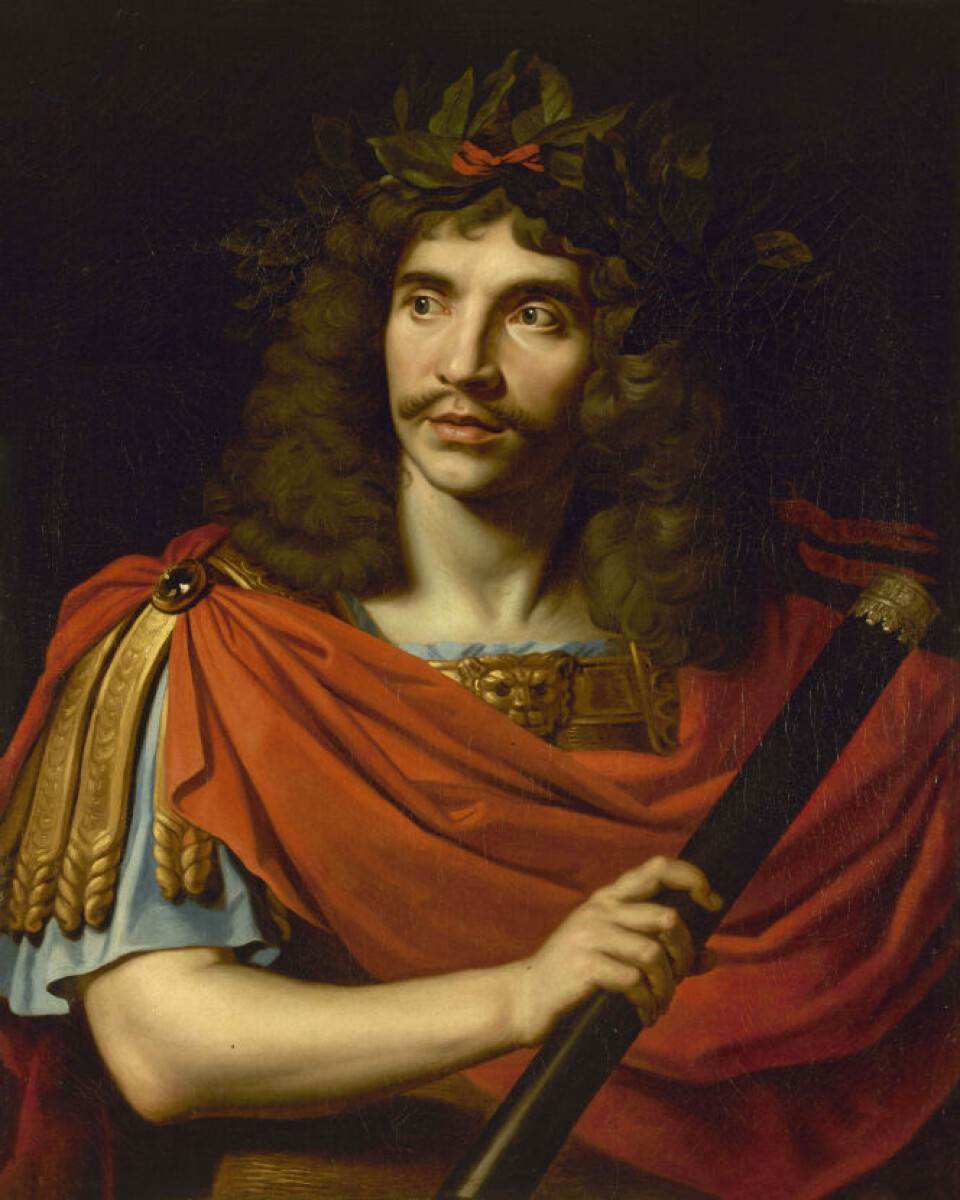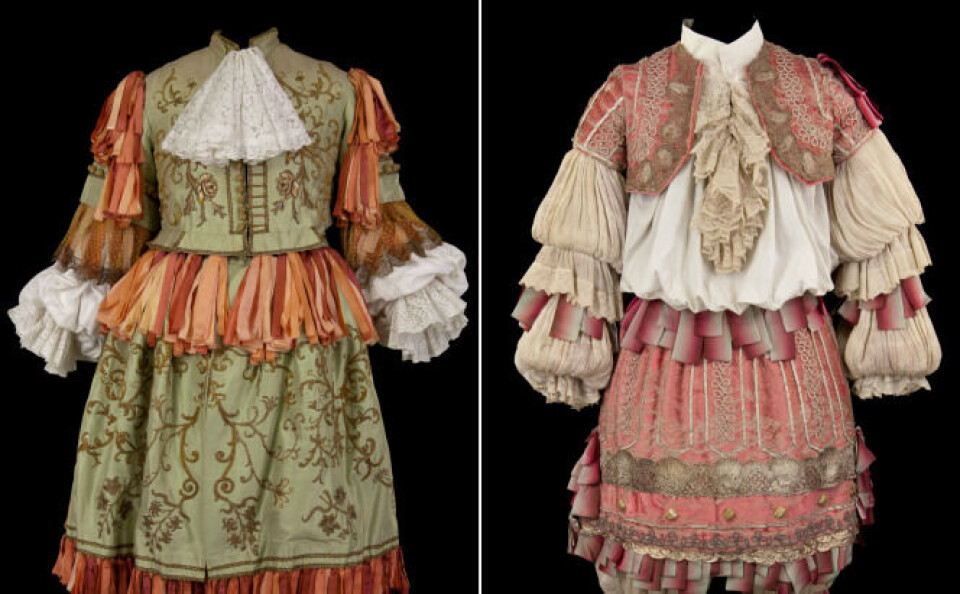-
Heritage Days in France: ideas for visits this weekend plus photos
Over 2,000 sites are set to welcome visitors for free on September 20 and 21
-
‘I am a gatekeeper of this village’s memory’ – French honorary mayor
Mayor Jean-Pierre Laparra talks to us about representing a town that was wiped out in the battle of Verdun
-
Test your knowledge: 3 fun French invention facts
Explore the intriguing stories behind three French innovations: the first camera phone photo, Napoleon's canned food solution, and the evolution of the pencil
Where life imitates art: France’s literary love affair with Molière
Jean-Baptiste Poquelin – the performer, playwright and lascivious lover, better known as Molière – celebrates his 400th birthday this year

In France, Molière is regarded as a national treasure, and French is sometimes referred to as ‘the language of Molière’.
To celebrate the 400th anniversary of his birth the Centre National du Costume de Scène in Moulins is holding a major exhibition of costumes used in productions of his plays until November 6.
Born into a prosperous family, Jean-Baptiste Poquelin (1622-1673) initially went along with his father’s plans for his life and career.
Having finished his education in Paris in 1641, aged 19, he took up a post at the court of Louis XIII, which his father had bought for him ten years earlier.
As an extremely part-time Valet de Chambre Ordinaire et Tapissier du Roi, he therefore acquired a taste for court life while also studying to be a lawyer.
At this time he met Madeleine Béjart, a talented actress, musician and writer from a famous theatrical dynasty.
With his family background, expensive education and glowing prospects, he had a lot to lose; at that time actors were regarded as so socially unacceptable that they were not even allowed to be buried in sacred ground.
Nevertheless, in 1643, aged 21, Molière gave it all up and invested 630 pounds to found the Illustre Théâtre with Madeleine. It is easy to imagine how his family reacted.
Two years later, the company went bankrupt, owing 2,000 pounds, and Molière was thrown into prison for debt. However, he remained incarcerated for just one day, because an anonymous third party settled the balance.
Perhaps his family were the benefactors, because it was around this time that he began using the name Molière (the name of a small village in the Cévennes mountains), which might have been an effort to protect the family name.

Portrait of Molière by Nicholas Mignard (1658). Pic: Nicholas Mignard
In 1645, Madeleine gave birth to her second daughter, Armande, believed to be fathered by the Duke of Modena.
Molière and Madeleine went on tour for the next twelve years, performing in venues all over France, often passing the baby off as Madeleine’s much younger sister.
Molière preferred playing tragedies, but had more success in the one-act comedies and farces that were presented after the main drama.
Madeleine was extraordinarily accomplished; she played a variety of musical instruments to a high standard, sang, danced, and wrote plays and poetry. She was beautiful and was said to be captivating on stage. She also managed the company.
As time went by, Molière not only acted but also began writing, mostly comedy. Sometimes, using an approach borrowed from the Italian Commedia dell’arte, just the plots and characters were roughly sketched out, leaving the actors space to improvise.
Both knew they would need patronage to survive and thrive. The king’s brother, Philippe I, Duke of Orléans, was an early supporter, along with Armand Bourbon-Conti, the prince de Conti and Grand maître de France.
Their lifestyle was bohemian, involving constant travel and performances. At one point Racine offered the company one of his works, Théagène et Chariclée. Molière turned it down, but encouraged Racine to continue writing.
“It’s difficult to deduce Molière’s real personality,” says Véronique Meunier, the curator of the exhibition in Moulins. “Contemporary accounts either tend to be written by his supporters or his detractors, so are probably extremely biased.
“Obviously he was literary, entrepreneurial, intelligent, independent, free-thinking, and self-confident. He was a very talented comic actor, possessed natural authority over others, and as a director and producer, ensured that all the players had their share of the limelight.
“Was that an artistic choice? Or an indication that he was generous towards others?”
From his career, it is clear that Molière was opinionated and unafraid of voicing his thoughts. From his plays, we can see that his sense of humour was barbed, ironic and cynical.
His work is crowded with incompetent doctors and charlatans selling fake cures. He takes aim at all kinds of snobbery, social climbing, hypocrisy and pretension. His plays with infidelities and jealousy, although his lovers usually enjoy a happy ending.
The company worked its way slowly up to Paris, arriving in 1658 and renting the theatre in the Louvre.
Their production of Corneille’s Nicomède and the farce Le Docteur Amoureux was so well-received that Molière earned the title Troupe de Monsieur (from Philippe I, Duke of Orléans). Molière and Madeleine had their feet on the path to success.
Louis XIV, the Sun King, took the throne in 1643, emerging from his mother’s regency in 1651 determined to promote the arts.
Molière began to write full-length five-act comedies in verse, often basing them on older plots, and incorporating a ‘clever servant’ character in his extended plays.
In 1660, the company moved into the abandoned theatre in the east wing of the Palais-Royal, which was refurbished and reopened in early 1661.
The play Dom Garcie de Navarre ou Le Prince Jaloux opened in February and was followed by two more successful shows, L’Ecole des Maris and Les Fâcheux, which was subtitled ‘comedy for the King’s amusements’.
The following year, 1662, at the age of 40, he married Madeleine’s daughter Armande, who was only 17. Although the marriage was not a happy one, they had three children together, but only their daughter Marie-Madeleine lived to adulthood.
“He was obviously very bohemian. Marrying your mistress’s daughter would be shocking even today, but he doesn’t seem to have cared about public opinion,” says Véronique Meunier.
The same year saw the first production of L’Ecole des Femmes (The School for Wives), ridiculing the lack of education given to the daughters of the wealthy, and poking fun at their behaviour.
It was widely seen as a comment on his own scandalous marriage (which did not seemingly end his relationship with Madeleine). For every criticism, he replied with more productions, more plays, more stinging jokes.
Not everyone was amused, however.
A group of well-connected people called the Parti des Dévots began protesting against the content of his plays as well as his marriage (many people suspected he had, in fact, married his own daughter). Former friends turned against him, but Molière had the King’s support, and a stipend to go with it. He carried on writing and performing for the court.
In 1664, he produced Tartuffe ou l’Imposteur, which caused widespread outrage with its depictions of hypocrisy amongst the ruling classes, and the play was banned, but Molière was still free to create what he chose. The King continued to support him, and he was always careful not to attack the monarchy. His most famous play, Le Misanthrope, was produced in 1666, but was not well-received.
It was followed by Le Médecin Malgré Lui, Amphitryon, Le Mari Confondu, and several musical plays in collaboration with composer, musician and dancer Jean-Baptiste Lully, including Le Bourgeois Gentilhomme.
Molière was at the height of his intellectual powers but he had tuberculosis and was physically ailing. Madeleine died in 1672, which was a massive blow, but he continued writing, producing Les Fourberies de Scapin, Les Femmes Savantes and Le Malade Imaginaire.
It was an extraordinary period which saw the development of opera as a performance art in its own right, meaning musical plays were banned for a time.

The Molière en Costumes exhibition includes more than 130 theatrical costumes, the oldest of which date back to 1880. Pic: CNCS / Pascal François
Ballet was also developing into a separate art form. Molière’s output was prodigious. He wrote 31 of the 85 plays performed during the 14 years he ran the theatre.
At the end of his life he was engaged to produce twelve comedy-ballets in collaboration with Pierre Beauchamp, who codified the five basic ballet positions and pioneered dance notation. He also continued to work with Lully, despite his failing health.
He died in 1673, aged 51, after collapsing on stage during a performance of Le Malade Imaginaire and insisting on finishing the show. He passed away a few hours later, having not received the last rites because two priests refused to come, and a third arrived too late. His remains were transferred to the Père Lachaise cemetery in 1817, and he remains one of France’s favourite playwrights.
The Molière en Costumes exhibition includes more than 130 theatrical costumes, the oldest of which date back to 1880. An interesting footnote is that because Molière was wearing a green costume when he collapsed on stage the night he died, to this day theatre people regard the colour green as unlucky.
Molière en Costumes runs at the Centre National du Costume de Scène in Moulins from May 26 to November 6, 2022.
Related stories:
Claude Monet: French impressionist who went to war for his art
Simon Beck: The artist reveals the secrets of his snowshoe drawings
Meet the artist behind France’s new Napoleon commemorative sculpture
























